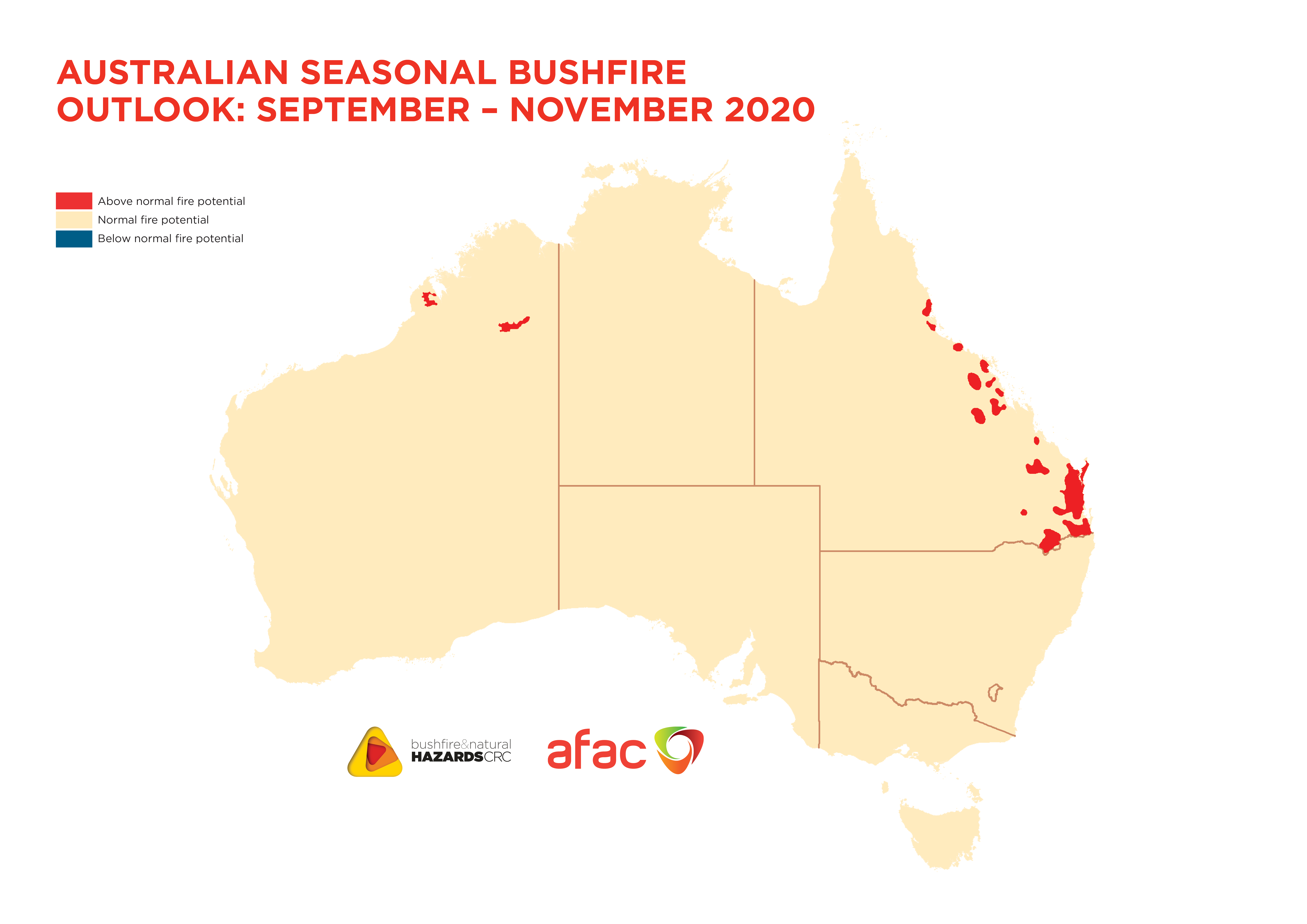Media release
From: Bushfire and Natural Hazards CRCThe 2020/21 fire season will be driven by vastly different climate drivers than the previous two fire seasons, according to the Australian Seasonal Bushfire Outlook: September – November 2020, released today by the Bushfire and Natural Hazards Cooperative Research Centre.
With a La Niña ALERT now active, large areas of eastern and northern Australia are expecting wetter than average conditions through spring. Despite the wetter climate signals, parts of Queensland face above normal fire potential in the south east and central coast, extending to the north.
In contrast to the wetter conditions for the east, dry conditions persist in Western Australia, with above normal fire potential continuing to be expected in parts of the north.
While the rainfall outlook is good news in the short-term for the bushfire risk, CEO of the Bushfire and Natural Hazards Cooperative Research Centre Dr Richard Thornton warns that the rain could increase the bushfire risk come summer.
“While these wetter conditions in eastern Australia will help for spring, they may lead to an increase in the risk of fast running fires in grasslands and cropping areas over summer. These conditions will be monitored closely over the coming months,” Dr Thornton said.
“Do not be complacent about fire. Fire is a regular occurrence across Australia, and it is important to remember that areas designated as normal fire potential will still see fires. When the wind is up and the weather is warm, fires can occur right across the country.
“Make sure you’ve got a fire plan, talk about it with your family, and ensure you have multiple back up plans. Our research shows it is important to include your children in planning to help them prepare, and don’t forget about your pets and animals too.”
The Bushfire Outlook is produced quarterly to assist fire and land management agencies in making strategic decisions, such as resource planning and prescribed fire management to reduce the negative impacts of bushfires.
Download the Australian Seasonal Bushfire Outlook: September – November 2020 here.


